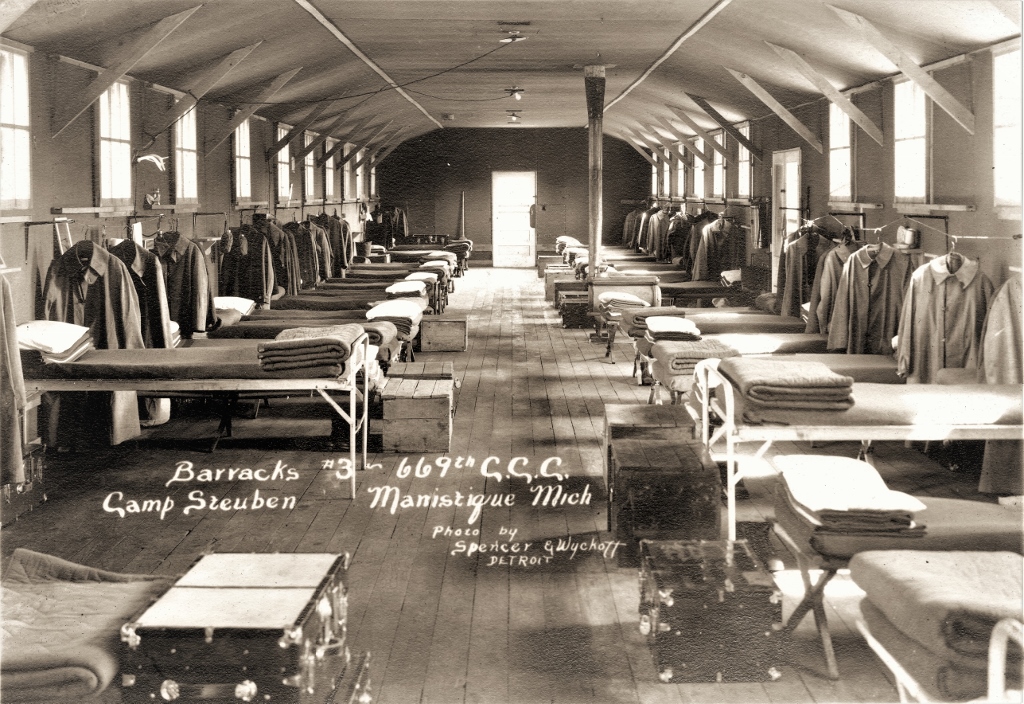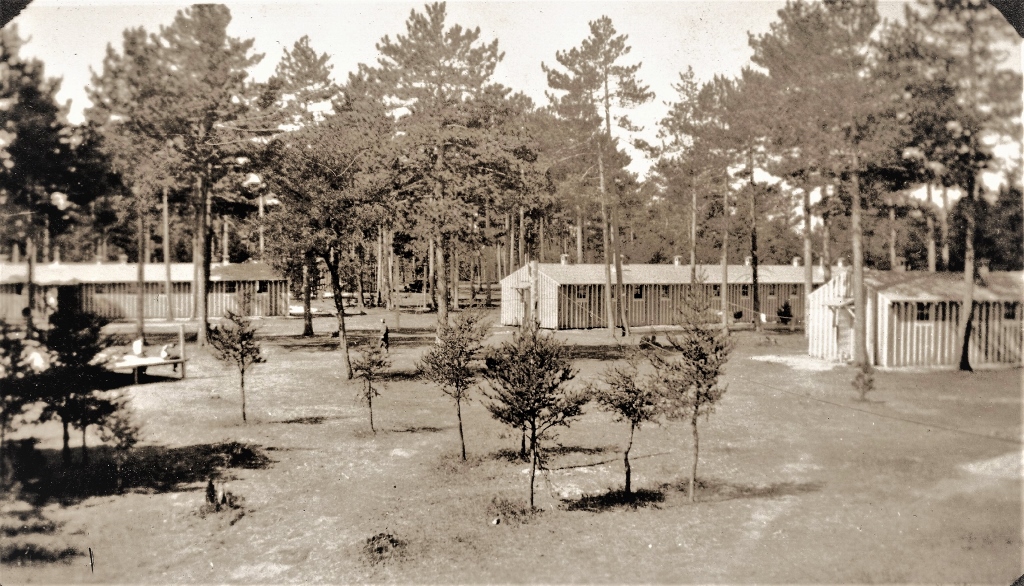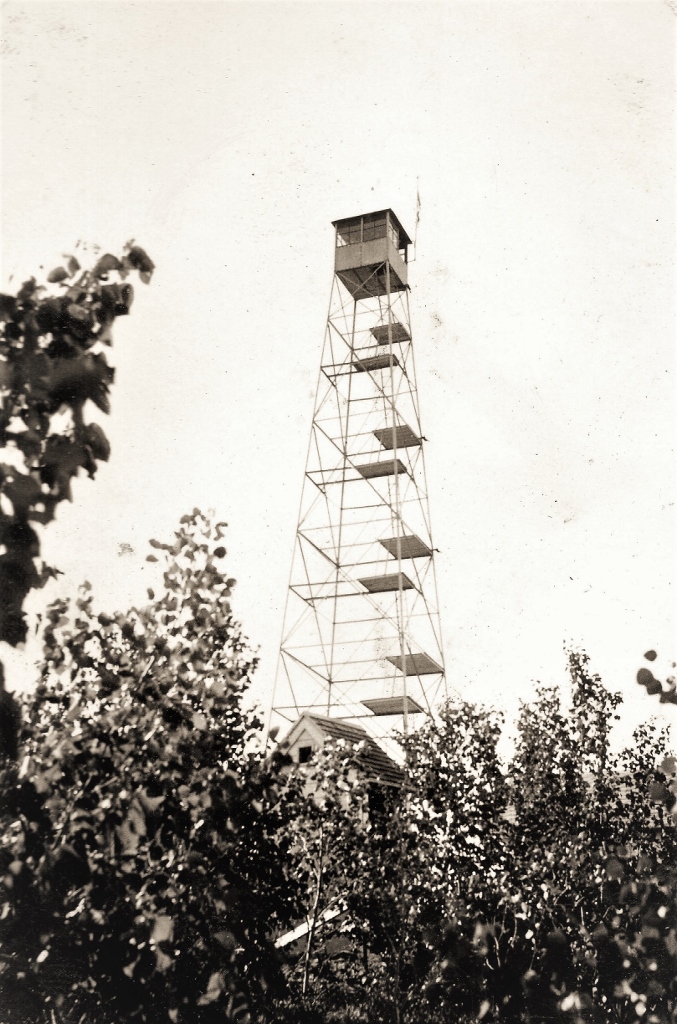
Interior view of Barracks No. 3 at Camp Steuben. The barracks measured 20’ by 112’. Photo courtesy Vivian Haight.
President Franklin Roosevelt’s Civilian Conservation Corp (CCC) was inaugurated on April 17, 1933 with the opening of Camp Roosevelt in the George Washington National Forest in Virginia. The program was designed to employ over 250,000 young men out of work during the Great Depression.
Camp Steuben in Schoolcraft County opened only 17 days later on May 4, 1933. The first recruits went through a two-week orientation at Camp Custer near Battle Creek, before heading north to the Upper Peninsula. One hundred and forty-one men from Custer were assigned to Camp Steuben and 212 others headed to Camp Kentucky in Alger County. Their journey was delayed five hours while waiting for a ferry to cross the Straits of Mackinac. Camp Steuben received additional recruits from Fort Sheridan in Illinois.
The majority of Michigan’s CCC Camps were located in national forests. Campers were engaged in work designed to prevent forest fires and to begin the process of reforestation. Fire prevention activities included the building of truck roads, and the construction of lookout towers and firebreaks. They also worked to establish nurseries which were vital to reforestation. The men at Camp Steuben were also engaged in these activities. They constructed a fire lookout tower near the town of Steuben in northern Schoolcraft County. They also helped with the construction of campgrounds on Indian River, Cowell Lake and Little Bass Lake.

Barracks at Camp Steuben. Photo Courtesy Vivian Haight.

Fire lookout tower at Steuben. Photo Courtesy Vivian Haight
In July of 1935, Camp Steuben was divided into three units. One third of the men stayed at Camp Steuben; another third formed Camp Evelyn in Alger County and the remainder formed Camp Manistique. During the summer of 1936, 75 boys from Steuben formed a side camp at the Manistique Fair Grounds. The establishment of the Wyman Nursery in Manistique was a combined effort of men from Camp Steuben, Camp Cooks and Camp Manistique. Twenty-five men from Camp Steuben cleared the land and prepared the ground for development as a nursery. The men from Camp Steuben were also involved in other projects including improvements to streams, planting of spruce and pine seedlings. and roadside cleanup. Steuben boys worked hard and also played hard. They fielded teams in football, baseball, basketball and other sports, competing against other camps in leagues and tournaments. In 1935, the camp’s newspaper, the Mockingbird, was voted the best CCC newspaper in the United States. After four and a half years in operation, the camp was closed in December of 1937. Buildings, sheds, tools and equipment was auctioned off in 1942.
Several CCC Camps were located in Schoolcraft County. Camp Germfask was perhaps the most unique, being the only U.S. Bureau of Biological Survey camp in Michigan. The CCC men at Camp Germfask were instrumental in creating the Seney National Wildlife Refuge. Ninty-five thousand acres of marshland were transformed into a sanctuary for migratory waterfowl. They built a system of dams, dikes, ditches, pools and spillways. Several hundred acres of celery, millet and wild rice were planted as food for birds. More heavy machinery was operated at Camp Germfask than at any other Michigan CCC camp.
Thank you to Larry Chabot, author of Saving Our Sons, for his assistance in research concerning Camp Steuben.
